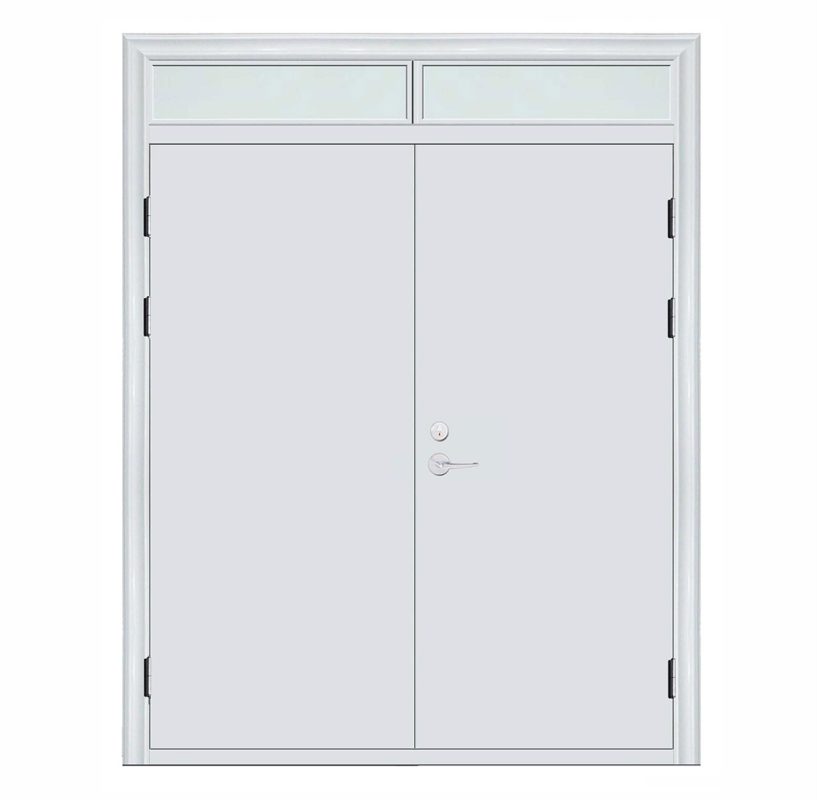
Incorporating and Optimizing Fire Door Regulations and Technical Specifications
According to the “High Regulations” GB50045-95, it is mandated that:
- Doors and windows communicating rooms with atrium corridors must be equipped with self-closing Class B fire doors and windows.
- Passageways and corridors communicating with atria must be separated by Class B fire doors or fire shutters with a fire resistance greater than 3.00 hours.
- The minimum horizontal distance between the nearest edges of doors, windows, and openings on both sides of a fire wall should not be less than 2.00 meters. If the horizontal distance is less than 2.00 meters, fixed Class B fire doors and windows must be installed.
- Doors, windows, and openings should not be created in a fire wall. When it is necessary to do so, Class A fire doors and windows capable of closing automatically should be installed.
- In basements where the average weight of stored combustibles exceeds 30Kg/m2, the partition walls of the rooms should have a fire resistance of not less than 2.00 hours, and the doors of these rooms should be Class A fire doors.
Technical Specifications for Steel Fire Doors:
- Fire Resistance Rating:
- Class A steel fire doors should have a fire resistance of not less than 1.2 hours.
- Class B steel fire doors should have a fire resistance of not less than 0.9 hours.
- Class C steel fire doors should have a fire resistance of not less than 0.6 hours.
- Direction of Door Swing:
- Right-opening doors should rotate clockwise.
- Left-opening doors should rotate counterclockwise.
- The opening direction of fire doors must be towards the direction of evacuation, as clearly stipulated in the “High Regulations”. This is crucial for facilitating evacuation during a fire emergency.
- Classification:
- By the number of door leaves: single-leaf and double-leaf steel fire doors.
- By the structure of the door leaves: steel fire doors with glass, without glass, with a vision panel, and without a vision panel.
- By fire resistance rating: Class A, B, and C fire doors.
- Technical Requirements:
- Materials and Accessories:
- Door frames, door leaf panels, and reinforcements should use cold-rolled thin steel plates. Frames should ideally use steel plates 1.2-1.5mm thick, door leaf panels 0.8-1.2mm thick, and reinforcements 1.2-1.5mm thick. If reinforcements have screw holes, the steel plate thickness should not be less than 3.0mm.
- The interior of door leaves and frames should be filled with non-combustible materials.
- Hardware accessories installed on steel fire doors, such as locks, hinges, and bolts, should have a melting temperature of not less than 950°C.
- Hinges installed on fire doors should not use double-action springs, and single-leaf doors should be equipped with door closers.
- Double-leaf doors must have a cover strip and be equipped with door closers.
- Materials and Accessories:
- Structural Features of Steel Fire Doors: Steel fire doors consist of a door frame and door leaf connected by hinges, equipped with door closers, fire locks, and for double-leaf doors, concealed bolts (installed on the side of the fixed leaf). If the door has a vision panel, it should be fitted with fire-resistant glass with the same fire resistance rating as the door. Due to the size constraints of steel plates, single-leaf doors can be manufactured up to a width of ≤1200mm. Class A, B, and C fire doors are filled with non-combustible materials with different thermal insulation coefficients and have a thickness of less than 45mm.
- Selection and Installation of Steel Fire Doors: Steel doors must be selected strictly according to the design requirements, such as fire resistance rating and type. When ordering, it is necessary to provide the dimensions of the structural opening to the supplier for reference. The supplier will then manufacture the doors according to these requirements. The principle is to reduce the top and both sides of the door frame by 10mm for installation (to account for structural expansion and grouting factors), with the bottom generally embedded 20mm into the frame corner, ensuring a more secure installation. The door leaf should be installed together with the door frame to ensure a gap of 3mm at the top and sides, a gap of 4mm in the middle seam, and a gap of less than 7mm between the door leaf and the floor (after the floor is finished) for ease of use after completion. Before installing steel fire doors, the hollow part of the door frame should be filled and leveled with a 1:3:1 mixture of cement, sand, and perlite, and only after it has set, should welding and installation proceed.
